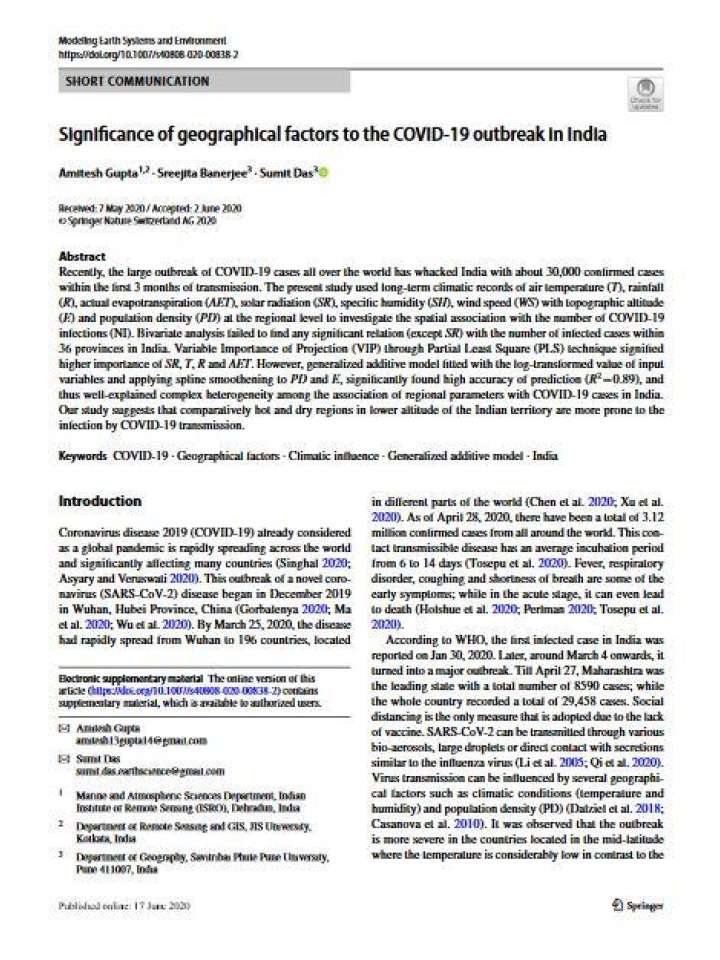Significance of geographical factors to the COVID‑19 outbreak in India
The present study aims to understand the geographical influence on the spatial distribution of COVID-19 transmission at the regional level in the context of India. It uses long-term climatic records of air temperature (T), rainfall (R), actual evapotranspiration (AET), solar radiation (SR), specific humidity (SH), wind speed (WS) with topographic altitude (E) and population density (PD) at the regional level to investigate the spatial association with the number of COVID-19 infections (NI). It is observed by several statistical analyses that climatic factors have an unavoidable influence on this viral disease in India. The study concludes that comparatively hot and dry regions in lower altitude of the Indian territory are more prone to the infection by COVID-19 transmission.
Explore further
